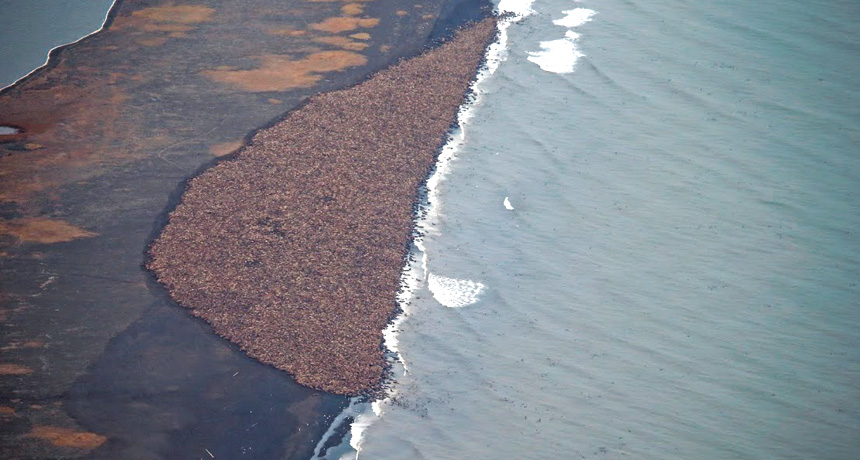Lacking ice, huge walrus herd congregates on Alaska shore
An estimated 35,000 animals have gathered to rest on dry land

MADDING CROWD A gigantic herd of walruses has hauled out on the beach near Point Lay, Alaska. The animals are taking to the beach due to the loss of their preferred haul out sites on sea ice.
Corey Accardo, NOAA Fisheries





